Review: Apple iPhone 8 Plus
Sep 29, 2017, 6:00 AM by Eric M. Zeman
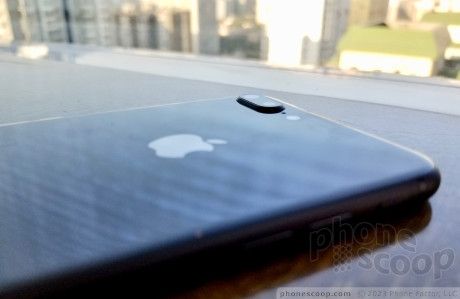
The iPhone 8 Plus is a monster of a device that pleases and disappoints at the same time. While new features, such as wireless charging and portrait photography, are great additions, the huge footprint and outdated display hold it back. Here is Phonescoop's full review.
Hardware
Is It Your Type?
The Apple iPhone 8 Plus is for those who prefer iPhones and want a newer one, but don't want to spend $1,000 or more on an iPhone X.
Body
The iPhone 8 Plus has the same basic design and footprint as the 2016 iPhone 7 Plus, which mirrored the 2015 6s Plus, which in turn echoed the 2014 6 Plus. That means the 8 Plus is the fourth generation of hardware from Apple to rely on a nearly identical design. The big change in this year's phone is the switch from a metal rear panel to glass. The glass is nice, but, to be frank, I'm done with this form factor; it's dated and tired. I wish the 8 Plus were different from older iPhones, but that's why Apple created the pricier iPhone X.
There's no question that Apple makes high-quality devices. The front glass panel of the 8 Plus is curved along the edges and it tucks into the metal frame seamlessly. The same can be said of the glass that forms the rear surface. The metal frame itself is rounded gently and is comfortable against your skin. There are no sharp or pointy edges anywhere; the iPhone 8 Plus is incredibly smooth all the way around. The 8 Plus comes in space gray, silver, and a new shade of gold. The rose gold option has vanished from the lineup, as has the piano black finish, and the (product) Red variant. The glass of our space gray review unit definitely looks more gray than black.
Like the previous three generations of Plus models, the iPhone 8 Plus is gigantic. At 6.25 inches tall and 3.1 inches wide, it's one of the bigger phones out there. If you have small hands, the 8 Plus might be too much phone. I know many who prefer the more compact footprint of the standard iPhone 6/6s/7/8.
At more than 7 ounces, the 8 Plus is also very heavy. The size and weight together make the phone an obvious burden to your pocket. The smooth and rounded shape of the phone means it won't get snagged on pocket liners.
The quality of materials and manufacturing is top notch, as to be expected. Apple continues to build some of the most confidence-inspiring hardware in the world.
The 8 Plus has an IP67 rating for protection from water and dust. You can dunk the phone in 1 meter of water for up to 30 minutes and still have a working phone when you pull it out. It handles running water, sweat, and rain with no problem. You needn't worry about accidentally dropping it in the pool, kitchen sink, or bath.
You will, however, need to worry about dropping it onto concrete, asphalt, or other hard surfaces. Two glass panels doubles the likelihood you'll break something. The already-huge iPhone 8 Plus more or less demands it be wrapped up in a case of some sort, making it even larger. Considering how much these phones cost, I highly recommend you protect it.
What I dislike most about the iPhone 8 Plus is its unchanged display style. While Apple's competitors have moved to all-display faces, the 8 Plus maintains the horrendous bezels seen on the previous three generations of hardware. The 8 Plus is still priced like a flagship phone, but you're no longer getting a flagship design. (For that, you have to pay even more for the iPhone X.)
The iPhone 8 Plus carries over the capacitive home button from the 7 Plus. The Taptic Engine inside the phone provides physical feedback every time you press the button. You can dial in the amount of feedback you receive. I prefered the middle choice, and I'm glad Apple offers several options.
Home Button
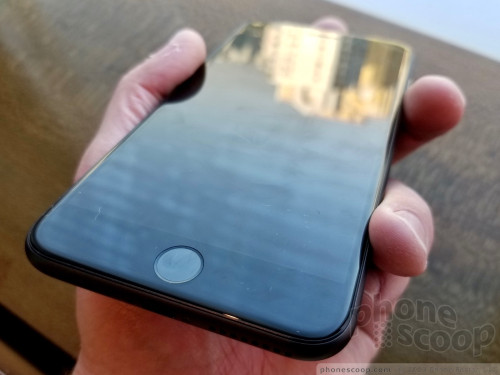
With iOS 11, a handful of actions are initiated by pressing the home button. A brief touch wakes the screen. A light press with an extra half-second of pressure will wake the screen and then unlock the phone if you have Touch ID enabled. A long-press opens Siri. Last, a double-press opens Apple Pay. I found it common to accidentally launch Apple Pay when I meant to wake or unlock the iPhone 8 Plus. Learning to finesse the home button takes some practice.
The ringer switch on the side is easy to find and use by feel, and the action is quite good. Few phones include a true ringer switch and I appreciate having it for quickly switching to silent/vibrate. The separated volume buttons below the ringer switch have good profiles and excellent travel and feedback. They double as shutter buttons when using the camera. The screen lock button and SIM card tray are positioned on the right edge of the phone. The 8 Plus's larger size means you often need to slide your thumb up the side to find the screen lock button. Action on the button is really good.
You won't find a headphone jack on the iPhone 8 Plus. The included headphones plug into the Lightning port, which is Apple's proprietary charging / data connector. Apple was one of the first to drop the headphone jack, and a few others have since followed. The iPhone 8 Plus can't charge and play music via the Lightning port at the same time unless you spend extra money on a dongle of some sort. Apple continues to rely on its own proprietary port rather than the standard — and just as capable — USB-C.
Lightning Port
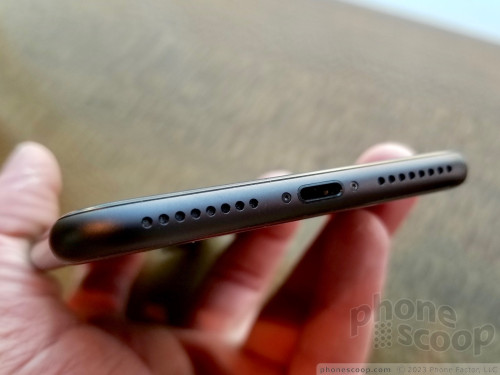
The iPhone 8 Plus's rear panel is perfectly flat, save for the camera module. The module protrudes significantly. I wish the camera did not stick out, as it makes the phone wobbly when placed on a hard surface. Using a case will resolve this issue.
You cannot access the battery. I do like the glass more than the metal of previous generations, but obviously this is a bit of a drawback. According to reports we've seen, repairing a broken rear panel on the iPhone 8 Plus will be more expensive than repairing the display itself. Get a case and/or invest in AppleCare+ insurance.
Rear Panel
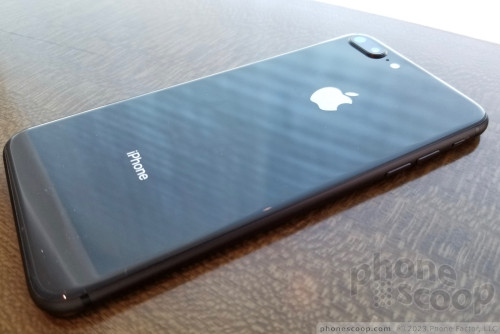
The iPhone 8 Plus is a well-made phone, but it's monstrously huge. I find the design boring, but Apple continues to manufacture some of the highest-quality hardware in the market.
Screen
The iPhone 8 Plus carries over the 5.5-inch full HD screen with 16:9 aspect ratio we've seen on the last three Plus models. Apple relies on in-plane switching LCD panels for its iPhones. The most significant change this year is Apple's move to its True Tone screen technology. Apple first deployed this tech on the iPad and now it's the iPhone's turn. True Tone automatically adjusts the white balance to match the ambient lighting. This means the screen's color will skew slightly blue or yellow so it is easier to read/see based on the surrounding light. To my eyes, the screen's tones most often looked yellow, or warm. You can turn True Tone off if you wish.
The screen adopts a wide color gamut to more accurately reproduce a full range of colors. When held side-by-side with an iPhone 7 Plus, the 8 Plus's screen did tend to pop a bit more with vibrant colors.
Apple says its dual”'domain pixels improve viewing angles, which is something LCDs typically don't do as well as OLED panels. I have no complaints about viewing angles on the iPhone 8 Plus, as the screen is easy to see as you tilt the phone from side to side. If there's any brightness drop or color shift I can't see it. The screen is easily bright enough to use outdoors under sunny skies. The oleophobic coating, which prevents fingerprints, is among the best on any phone.
As for the resolution, well, I am not as impressed. Almost every other phone in this price class has adopted quad HD resolution. With that said, the size and pixel density do suffice for browsing the web, watching videos, and enjoying social media. It's a fine display for the majority of people. (Though I'm looking forward to examining the higher resolution AMOLED display of the iPhone X later this year.)
Signal
The iPhone 8 Plus is widely compatible with U.S. LTE 4G networks. There are two significant versions: the A1864 (with a Qualcomm modem) and the A1897 (Intel modem). The Qualcomm variant doubles as the Verizon/Sprint and unlocked model, while the Intel variant is for AT&T/T-Mobile. The AT&T/T-Mobile version supports Band 66 for T-Mobile, but not the new band 71 (600 MHz). If possible, we recommend you buy the Verizon or unlocked model, as it is compatible with all U.S. networks and provides the most flexibility to end users. (Obviously this will depend on your own upgrade situation.) This year, Apple is selling the unlocked model immediately alongside the carrier variants. (Apple previously waited several weeks or even months before making the unlocked model available.)
We picked up the unlocked version and tested it briefly on AT&T, T-Mobile, and Verizon. The phone works very well on these three networks. I didn't experience any trouble connecting to 4G and saw strong LTE performance on each. Data speeds were excellent. You shouldn't have any trouble streaming media, such as music or video, over 4G. Voice calls connected on the first dial and the phone didn't drop any calls when moving at highway speeds.
Sound
On the iPhone 8 Plus, calls are generally clear and free of distortion via the earpiece, though I wish voices were a bit warmer. The earpiece generates enough volume to hear calls in most places. I was able to maintain conversations on busy city streets, bustling coffee shops, and traveling cars. People I spoke to through the iPhone 8 Plus said I sounded very good.
The speakerphone introduces just a teensy bit of distortion, but it also pushes plenty of air. You can use the speakerphone at home, the office, or in the car with no problem. Ringers and alarms are pleasantly loud, and the vibrate alert is excellent.
The iPhone 8 Plus improves upon the 7 Plus's stereo speakers. The earpiece leans toward trebly tones when listening to music, while the bottom-mounted speaker leans toward bass-y tones whether you're holding the phone in portrait of landscape orientation. Last year's phone was somewhat imbalanced in terms of the amount of sound produced by the earpiece and bottom speaker, but the iPhone 8 Plus produces much more even sound between the two speakers. Music and video sound better no matter how you're holding the phone.
Battery
Even though the iPhone 8 Plus is the same size as the 7 Plus, it actually has a smaller 2,675 mAh battery inside. This power supply is 20% to 40% smaller than those found in competing Android handsets, but that's not an apples-to-apples comparison because of the different OS and custom Apple chips inside. Based on the performance I experienced, you wouldn't know it has a smaller battery.
I used the phone while on a business trip and found it delivered the goods. This smartphone pushed through heavy days without breaking a sweat. I used it extensively for mapping and navigation, photography, social media, messaging, browsing, and music playback. I kept it connected to an Apple Watch via Bluetooth throughout my review period. On days when I demanded breakfast-to-bedtime battery life, despite all this usage, it managed with ease. I rarely saw the battery dip below 30%.
More importantly, the new iPhones include wireless charging for the first time. This is made possible in part by the glass rear panel. Apple selected Qi, one of two competing (and incompatible) wireless charging standards. So there are wireless charging pads out there that the new iPhones won't work with. (Today's high-end Android phones are dual-standard.) But Qi is popular, and will likely become the dominant standard now that Apple is behind it.
I used the 8 Plus with a Qi wireless charger and it certainly worked, though it was slower than charging via cable. (Samsung offers fast wireless charging in its high-end phones.)
As far as rapid charging is concerned, the iPhone 8 Plus does support faster charging than older iPhones, but the included charger won't charge the phone quickly at all. You are better off using an iPad charger, which will deliver a quicker charge thanks to higher wattage. Even then, the iPhone 8 Plus still won't charge as rapidly as competing Android handsets. The best solution is to buy the Apple charger that uses USB-C on one end and Lightning on the other, as it charges the quickest.
Bluetooth, GPS, NFC, WiFi
The iPhone 8 Plus includes Bluetooth 5.0. This isn't overly significant right now, but it ensures the iPhone will be compatible with high-performance Bluetooth 5.0 accessories.
The 8 Plus worked with all of the Bluetooth devices I threw at it. Apple's Bluetooth software made pairing with a variety of devices a simple, painless process. Calls sent to mono headsets sounded good, while calls routed to my car's hands-free system bordered on excellent. Music pushed to a stereo Bluetooth speaker sounded awesome.
The 8 Plus offers GPS and it worked perfectly with Apple (and Google) Maps. Apple's mapping app was able to find me quickly, and location was as good as 20 feet. The 8 Plus makes for a fine navigation device via Apple Maps, which adds lane guidance in iOS 11 and better traffic notifications.
NFC is on board. It powers Apple Pay, of course. But thankfully, iOS 11 unlocks the the NFC radio to do a bit more. Developers can take advantage of the NFC radio for new features, though we have yet to see these tools become available in the real world.
The 8 Plus packs dual-band WiFi with MIMO. This means the 8 Plus is compatible with the fastest WiFi networks. I had no trouble at all with the 8 Plus's WiFi.
Software
If you're interested in learning absolutely everything there is to know about what's new in iOS 11, please be sure to read our full review of Apple's latest operating system here. In this review, we cover Siri, messages, maps, the App Store, Do Not Disturb, Apple Music, screenshots, files, and the new Photos app.
Lock Screen
iOS 11 makes a mess of the lock screen as far as I'm concerned. The lock screen provides access to three basic things.
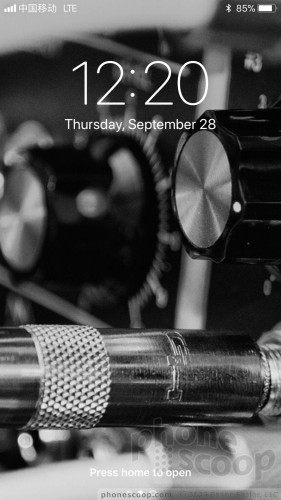
First, notifications. New/missed notifications appear front and center, with a clock above. Swipe down from the top to see a preview of additional recent notifications for a few seconds. Swipe up on the preview — or the blank lock screen — to see all of your current notifications in a big scrolling list. The clock stays at the top, and this is sort of an alternate mode for the lock screen. There's no way to hide the list of notifications without unlocking the phone or putting it to sleep, which is probably fine, but it doesn't feel right.
Second, you can swipe to the left to see the widgets screen. The iOS 11 widget screen lets you customize dynamic content, such as your calendar, music, photos, and so on. It's easy to manage, but I question just how useful it is. While you can see snippets of information, such as news headlines, you still have to unlock the phone to access any of it.
Third, you can swipe right from the lock screen to access the camera.
Everything about the lock screen described above is exactly the same for the notification shade when the phone is unlocked. While this new consistency sounds nice in theory, it's very disorienting and doesn't always make sense. Rather than float on top of your grayed-out home screen, the notifications shade covers the entire screen from top to bottom, so you can see all the missed calls and notifications. Why you'd put the camera as a sideways swipe from the notifications shade, I have no idea.
The iPhone does not include anything resembling an always-on or ambient display, though you can send notifications to the lock screen.
On the security front, the iPhone 8 Plus carries over the Touch ID fingerprint reader. Touch ID is a great bit of technology and one of the quickest, most reliable fingerprint readers in the market. If you're not down with biometrics, you can opt for a 4-digit PIN, a 6-digit PIN, or an alphanumeric password. I recommend you stick with Touch ID, as it is the simplest and fastest method for securing and unlocking your iPhone. You can use Touch ID to quickly authenticate Apple Pay and iTunes Store purchases, as well.
Home Screens
More than a decade after the debut of iOS, the home screens of iOS 11 look and behave in almost the same way. As always, apps placed on home screen panels still snap up and to the left into a self-forming grid. Four apps of your choice are always accessible from the dock at the bottom of the screen. I'd love to see the iPhone 8 Plus, with its larger screen, accommodate five apps in the dock, or five apps across in the Home Screen, but no such luck. Folders can contain dozens of apps, and you can populate nearly unlimited home screens with apps.
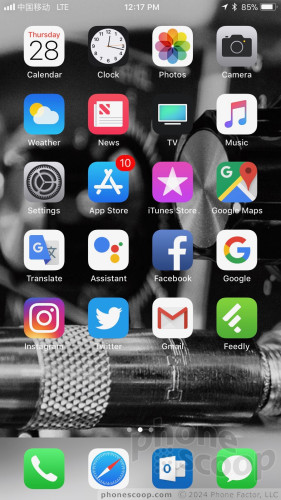
The Settings area grows each year, but a search tool helps. The overall organization and usability is about the same as always. It's a cinch to adjust wallpapers, ringtones, alerts, and other custom behaviors. iOS allows you to tweak font and icon sizes, too. The accessibility options are plentiful.
It's a shame that Apple hasn't brought split-screen multitasking to the iPhone yet.
The iPhone 8 Plus offers 3D Touch, which means the screen recognizes light touches as distinct from more firm presses. A hint of vibration lets you know you've activated a 3D Touch action.
Firm presses made on the home screen call up an action menu of potential secondary options. On the Twitter icon, for example, you can start a new direct message, new Tweet, or perform a search. Apple's Messages app lets you start a brand new message, or respond to one of the last three people who messaged you. In general, these action menus let you skip a few steps. To be honest, I often forget 3D Touch is even a thing on the iPhone.
iOS 11 revises the Control Center. It's still accessed via swiping up from the bottom of the screen, but it now has more controls that can be customized and moved around.
The iPhone 8 Plus has Apple's new A11 "bionic" processor with M11 motion co-processor and 3 GB of RAM. That's an extra 1 GB compared to the smaller model.
How fast is the A11? Crazy fast. The processor makes mincemeat of most tasks. It chews through compute-heavy apps, such as augmented reality, without breaking a sweat. In terms of real-world performance, that means apps open quickly, apps download from the App Store rapidly, and so on. That doesn't mean performance was awesome across the board, as iOS 11 is still pretty buggy. I did see some odd stutters and animation goofs on the 8 Plus that I am going to attribute to Apple's sloppy code.
Camera
The camera app opens in an instant.
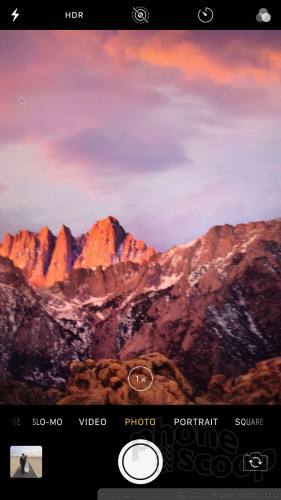
The iPhone camera offers a handful of basic shooting modes: normal, panorama, portrait, and square for pictures, plus normal, slo-mo, and timelapse for video. All seven of these are accessed by swiping the viewfinder sideways from one mode to the next. It can be bothersome to swipe your way through all the modes from one end of the chain to the other.
Several small controls are always visible. They let you select from nine filters, set the timer, turn Live Photos on/off, or toggle the flash through on/off/auto. The controls for HDR, which used to appear here, have been moved to the settings. HDR is on by default.
Like the 7 Plus last year, the 8 Plus includes two cameras. The main camera features a 28mm lens at f/1.8 and the secondary camera features a 56mm lens at f/2.8. A little "1x" button appears in the viewfinder. Tap the "1x" button to instantly zoom in to 2x magnification, with full resolution and sharpness. Technically, the button causes the camera to switch from from the wide-angle lens to the telephoto lens. Apple's software seamlessly switches the camera from one lens to another to provide a great zooming experience. You can also use an on-screen dial to adjust digital zoom up to 10x.
The most significant and unique feature available to the iPhone 8 Plus (and later the iPhone X) is the new advanced lighting tools when shooting in Portrait mode. Portrait mode makes use of both cameras to enhance pictures of people by blurring the background so the subject stands out. This basic effect is often referred to as “bokeh” and it has been around for years now.
The new lighting effects allow you to easily switch between five different scenes, including natural, contour, studio, stage, and stage mono. Each produces slightly different results. For example, natural gives you a soft look with warm skin tones, while the stage and stage mono options highlight just the subject's face and do away with the background almost entirely. These are some fancy-pants, artistic modes to help you pretend you're a studio photographer. I found them fun to experiment with and I enjoyed the results. If you find yourself taking pix of people more than anything else, you really need to check these modes out.
The iPhone 8 Plus also shoots Live Photos. Live Photos capture a short video clip along with each still picture. When Live Photos is turned on, the iPhone automatically captures 1.5 seconds of video before and after you actually press the shutter button. The result is a combined still image / video clip that includes motion and sound. Apple's Live Photos are *still* too difficult to share to platforms other than Apple/Facebook.
The iPhone's camera is slowly becoming more complicated to use. The original iPhone was praised for its simple, effective camera interface. Those days are long gone.
The iOS 11 camera on the iPhone 8 Plus is the most advanced Apple has ever offered. The good news here is that, thanks to the A11 bionic processor, the camera is faster than ever.
Photos/Video
Apple says the iPhone 8 Plus has a larger, faster 12-megapixel sensor with deeper pixels and optical image stabilization for the main f/1.8 lens. The secondary sensor also has a 12-megapixel sensor and telephoto lens for zooming and Portrait mode. These work together with the A11 processor and a new image signal processor.

The iPhone 8 Plus takes some of the best photos you'll find on a mobile phone. Daytime shots look great. You'll see sharp focus, excellent exposure, and rich colors. I was very pleased with the way the 8 Plus performed during a week-long trip to China.
I did notice a small quality difference when switching to the telephoto lens, particularly in low light situations, as its slower f/2.8 aperture isn't as on the same level as the main lens.
Nighttime shots have very little grain. In fact, I was surprised by how clean some of the nighttime cityscapes I captured appear in my results.
The 7-megapixel selfie camera, which has a screen-based flash, also does an excellent job. Snapchat and Instagram lovers will be very happy with the selfies produced by the 8 Plus. Most shots were well-exposed, sharp, and free of grain and other noise.
The iPhone 8 Plus can shoot at a variety of resolutions and speeds. The big additions this year are support for 4K at 60fps for smoother ultra high-def, and 1080p at 240fps for even slower, sharper slow-motion. The results are stunning.
Truly, Apple has done a fantastic job with the 8 Plus cameras.
The 8 Plus can and will probably replace your entire photo/video rig; it can handle tons of scenarios and is good enough for your most demanding events.
One thing worth noting: iOS 11 introduced a new photo compression format called HEIF. Apple's own macOS High Sierra 10.13 supports HEIF, but Windows machines do not. You may not be able to access and/or use images generated by the iPhone 8 Plus if you're using older or non-Apple equipment.
Wrap-Up
The Apple iPhone 8 Plus leaves me with mixed feelings. It's a well-made piece of hardware assembled from the finest materials, but the design is old, boring, and dated. The huge bezels get on my nerves, which is all I need to convince me that the iPhone X is a better option for me. But the iPhone X is at least $200 more than the iPhone 8 Plus, and that extra $200 doesn't buy you that much more performance.
The core facets of the iPhone 8 Plus and iPhone X are shared. Those include the A11 processor, dual-camera array, wireless charging, and better sound. The 8 Plus has a few benefits over the X. First, it costs less. Second, it's compatible with your existing iPhone 7 Plus accessories. Third, Touch ID. Fourth, it's available right now from most U.S. carriers and even unlocked if you prefer. Reports suggest supply of the iPhone X will be tight when it launches in November.
If you have a lot of iPhone 7 Plus accessories, prefer Touch ID, and want to save $200, then the iPhone 8 Plus is a fine — but not necessary — upgrade. If you're seeking something entirely new and don't care how pricey it is, then perhaps waiting for the iPhone X would be best.
Rear Panel

Comments
Obvious bias in your iPhone 8 plus review!
The iPhone is more refined, more feature oriented and has the best quality hardware on the market but to you its boring, over and over and over again!
When you build the best hardware and software, why do you need to remake it every year? I am positive that you will have bones to pick with Apple's iPhone X.
I used to look at phone scoop as a good source of hones...
(continues)
Why?


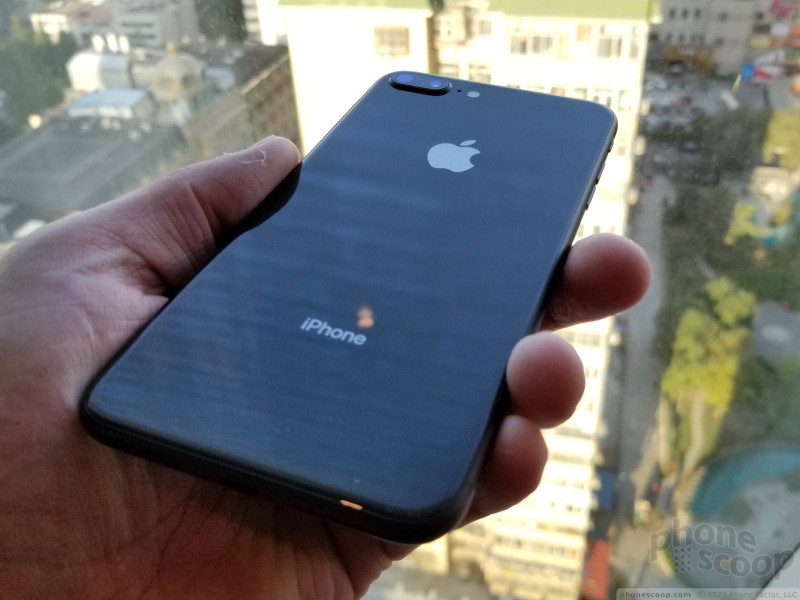















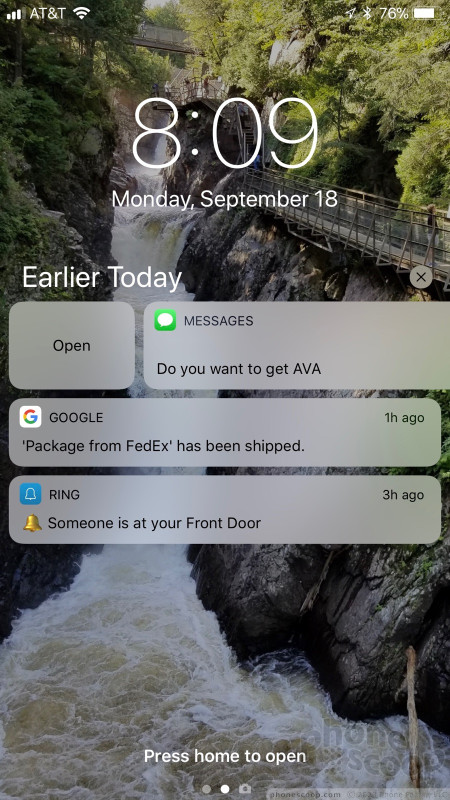





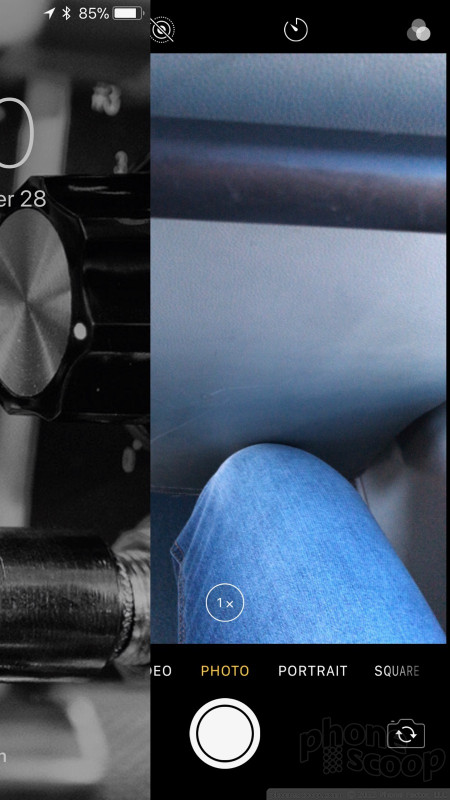


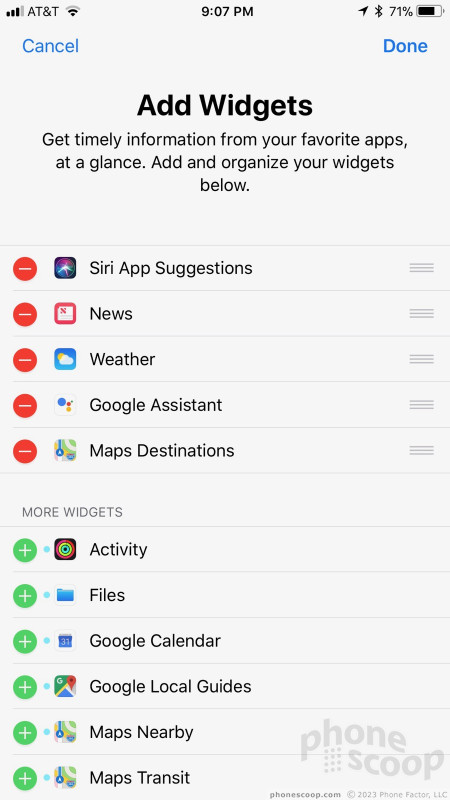





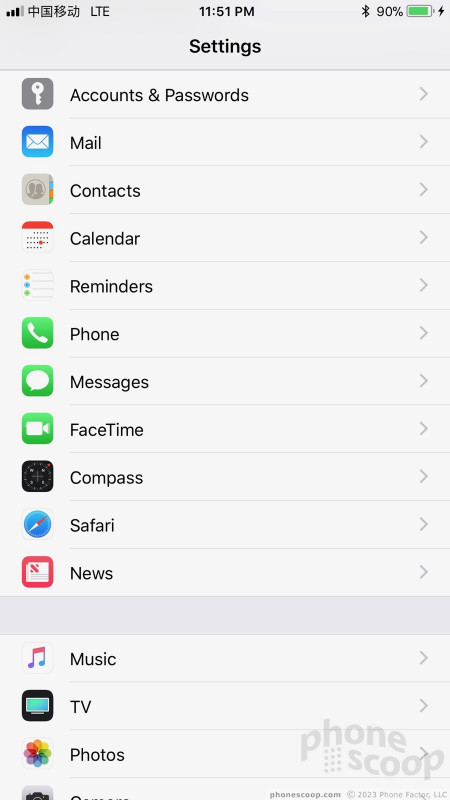



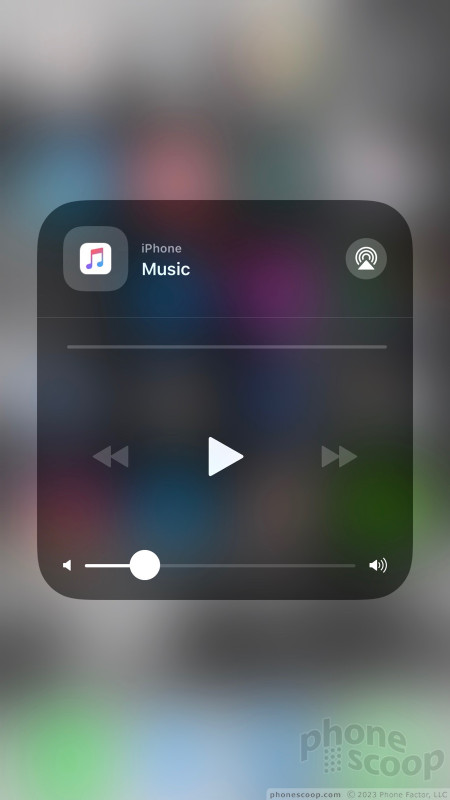





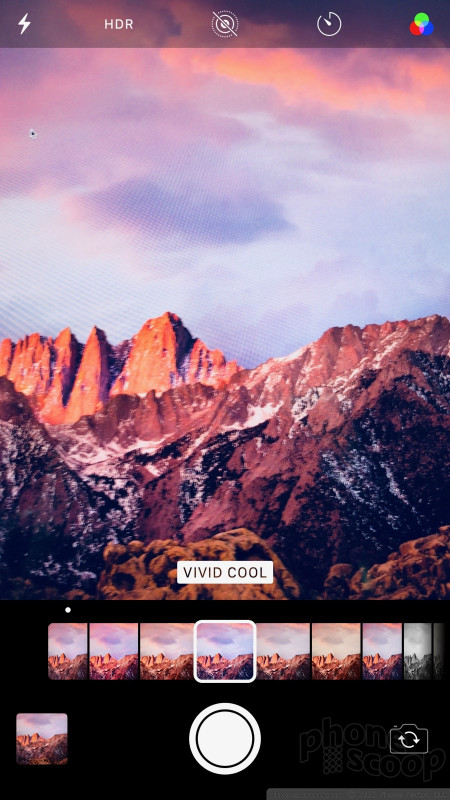










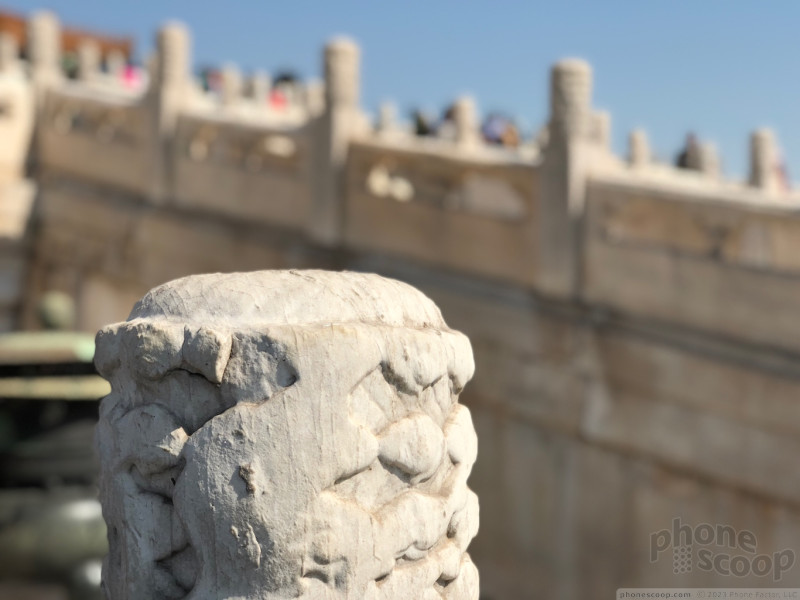




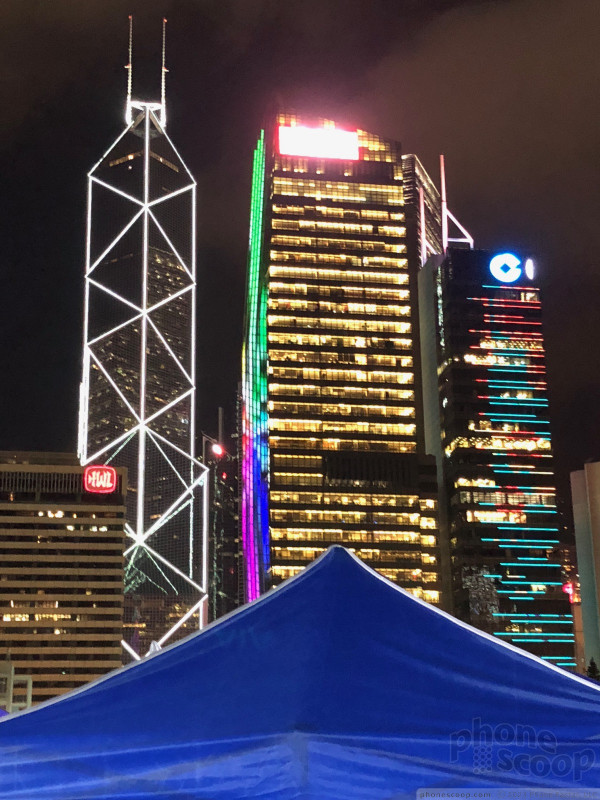

























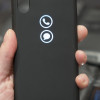 Iconcase Adds Notification Lights to Your iPhone
Iconcase Adds Notification Lights to Your iPhone
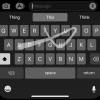 Apple Releases iOS 13 Public Beta
Apple Releases iOS 13 Public Beta
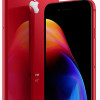 Apple Debuts (Product) Red Special Edition iPhone 8 and iPhone 8 Plus
Apple Debuts (Product) Red Special Edition iPhone 8 and iPhone 8 Plus
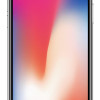 Verizon Debuts Discounted iPhone Promo
Verizon Debuts Discounted iPhone Promo
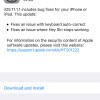 Apple Releases iOS 11.1.1 to Fix Keyboard Bug
Apple Releases iOS 11.1.1 to Fix Keyboard Bug
 Apple iPhone 8 Plus
Apple iPhone 8 Plus









